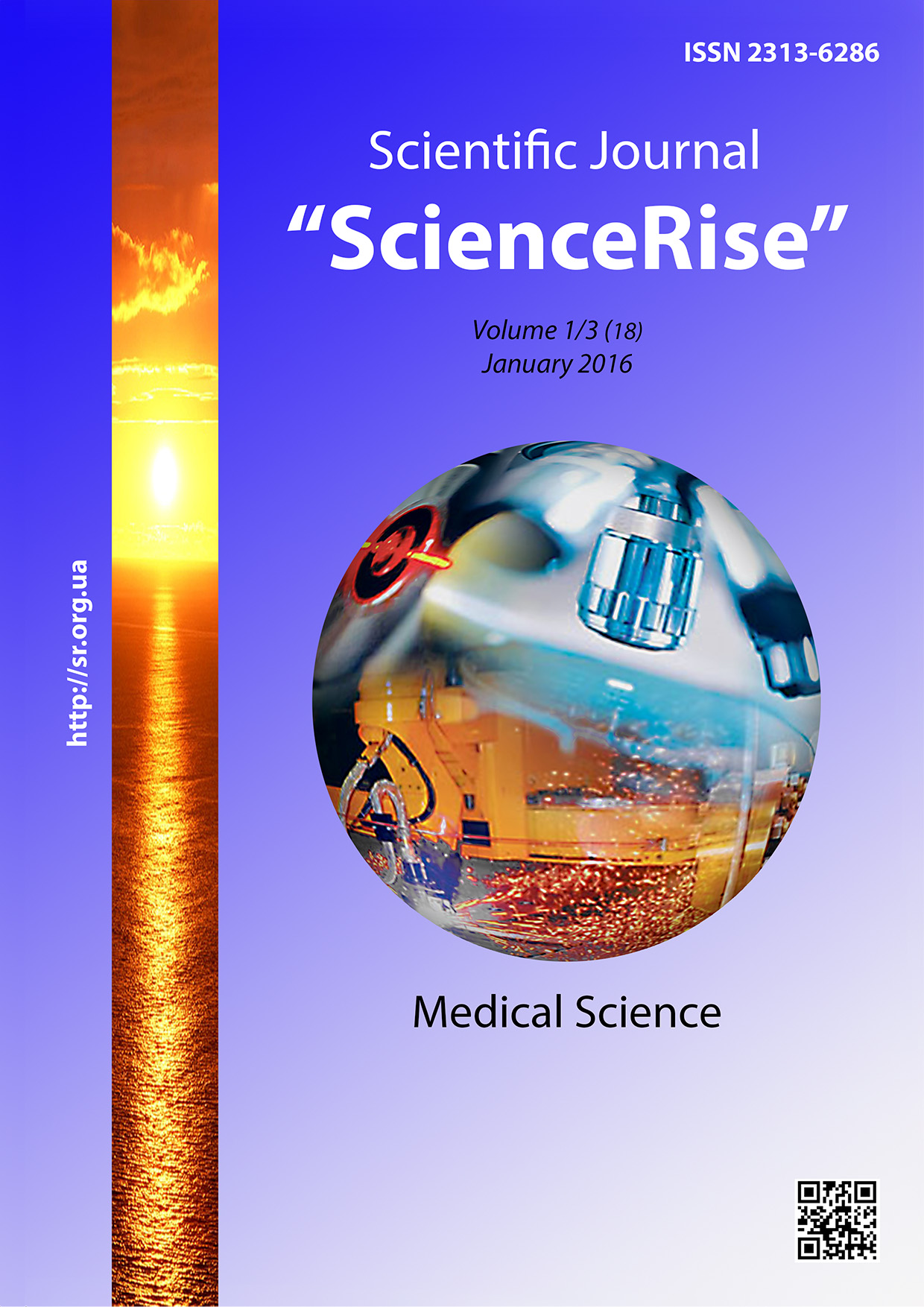Assessment of the water sectors of organism before birth in pregnant women with normal pregnancy
DOI:
https://doi.org/10.15587/2313-8416.2016.59139Keywords:
water sectors of organism, water metabolism, interstitial liquid, pregnancy, birth, impedometryAbstract
Aim of research – the study of possibilities and the ground of objective assessment of the water balance of organism before birth.
Methods. There were examined 85 women divided into two groups depending on pregnancy or its absence. In the main group examination was carried out at admission to the delivery room for delivery. The study of the water spaces and sectors of organism was carried out using the method of integral dual-frequency impedometry.
Results. The results of research demonstrated that at the normal pregnancy the whole water volume in organism increased by 22,6 % to the time of birth. An increase of the volume of extracellular liquid to the end of the 3th term of pregnancy was caused by increase of the interstitial liquid volume by 32,4 %.
Conclusion. The timely objective assessment of the water balance during pregnancy, birth and in postnatal period allows to define the differential approach to infusion therapy depending on state and ratio of the water sectors of organism and to raise the quality of medical help that is realized in postnatal period
References
Kaplan, L. J., Kellum, J. A. (2010). Fluids, pH, ions and electrolytes. Current Opinion in Critical Care, 16 (4), 323–331. doi: 10.1097/mcc.0b013e32833c0957
Dzhonboboeva, G. N. (2011). Optimizatia kompleksnoy infuzionnoy terapii u rodilnitc s gestozom sredney i tyajeloy stepeni tyajesti (preeklampsiey) [Optimization integrated infusion therapy of puerperas with gestosis moderate to severe (pre-eclampsia)]. Moscow, 26.
Cherniy, V. I., Kolesnikov, A. N., Oleynikov, K. N. et. al (2012). Ratcional’naya infuzionnaya terapia [Rational infusion therapy]. Donetsk: Izd. Zaslavskiy A. Yu., 184.
Kyle, U. (2004). Bioelectrical impedance analysis? part I: review of principles and methods. Clinical Nutrition, 23 (5), 1226–1243. doi: 10.1016/j.clnu.2004.06.004
Lobo, D. N., Lewington, A. P., Allison, S. P. (2013). Basic concepts of fluid and electrolyte therapy. Bibliomed: Medizinische Verlagsgesellschaft mbH, Melsungen, 136. Available at: http://www.bbraun.com/documents/Knowledge/Basic_Concepts_of_Fluid_and_Electrolyte_Therapy.pdf
Dennis, A. T., Castro, J., Carr, C., Simmons, S., Permezel, M., Royse, C. (2012). Haemodynamics in women with untreated pre-eclampsia*. Anaesthesia, 67 (10), 1105–1118. doi: 10.1111/j.1365-2044.2012.07193.x
Benelam, B., Wyness, L. (2010). Hydration and health: a review. Nutrition Bulletin, 35 (1), 3–25. doi: 10.1111/j.1467-3010.2009.01795.x
Carlin, A., Alfirevic, Z. (2008). Physiological changes of pregnancy and monitoring. Best Practice & Research Clinical Obstetrics & Gynaecology, 22 (5), 801–823. doi: 10.1016/j.bpobgyn.2008.06.005
Borghi, C., Cicero, A. F. G., Esposti, D. D., Immordino, V., Bacchelli, S., Rizzo, N. et al. (2010). Hemodynamic and neurohumoral profile in patients with different types of hypertension in pregnancy. Internal and Emergency Medicine, 6 (3), 227–234. doi: 10.1007/s11739-010-0483-5
Uzan, J., Carbonnel, M., Piconne, O., Asmar, R., Ayoubi, J.-M. (2011). Pre-eclampsia: pathophysiology, diagnosis, and management. Vascular Health and Risk Management, 7, 467–474. doi: 10.2147/vhrm.s20181
Dennis, A. T., Solnordal, C. B. (2012). Acute pulmonary oedema in pregnant women. Anaesthesia, 67 (6), 646–659. doi: 10.1111/j.1365-2044.2012.07055.x
Downloads
Published
Issue
Section
License
Copyright (c) 2016 Дмитро Анатолійович Хасхачих, Владислав Анатолійович Седінкін, Сергій Донатович Євсевський, Галина Михайлівна Макарчук, Світлана Миколаївна Чорноморець

This work is licensed under a Creative Commons Attribution 4.0 International License.
Our journal abides by the Creative Commons CC BY copyright rights and permissions for open access journals.
Authors, who are published in this journal, agree to the following conditions:
1. The authors reserve the right to authorship of the work and pass the first publication right of this work to the journal under the terms of a Creative Commons CC BY, which allows others to freely distribute the published research with the obligatory reference to the authors of the original work and the first publication of the work in this journal.
2. The authors have the right to conclude separate supplement agreements that relate to non-exclusive work distribution in the form in which it has been published by the journal (for example, to upload the work to the online storage of the journal or publish it as part of a monograph), provided that the reference to the first publication of the work in this journal is included.

